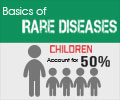About
Progeria, also known as ‘Hutchinson–Gilford progeria syndrome’ or ‘Hutchinson–Gilford syndrome,’ literally means ‘prematurely old’.
It was first described as early as 1886 and is defined by the Encyclopedia of Genetic Disorders and Birth Defects as “a rare genetic disorder resulting in premature aging”.
Progeria is a severe illness, which sets in at a very early age causing young children to develop symptoms of old age. It can be diagnosed within 6 months to a year of a child’s birth.
Children suffering from progeria present a pathetic picture with ten year old kids looking as old as, if not older than, their seventy year old grandparents. As growth takes a back seat, these children present with a big head and a disproportionately small body.
Progeria is progressive and fatal. The affected children live for an average of thirteen years, although some are known to live longer.
Thankfully, the syndrome is extremely rare and has a very low incidence. The April 2003 issue of Science News magazine had reported that progeria affects an estimated one in 4 million children. But the flip side is that the disease is not adequately understood because there are not enough cases for studies to be conducted and for the condition to be better comprehended.
Scientists are extremely interested in progeria because it has the potential to unravel the secrets associated with the aging process.
Currently there are about 35-45 recorded cases of progeria the world over. No race or ethnic group has been specially favored, and the disease boasts of a universal occurrence.









